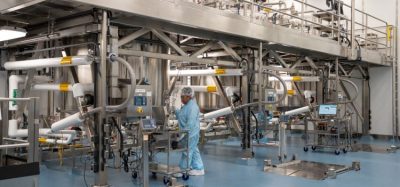New vaccine offers hope for pneumonia
Posted: 20 October 2017 | Dr Zara Kassam (European Pharmaceutical Review) | No comments yet
Scientists are developing a vaccine by targeting strains of S. pneumoniae…


Scientist are developing a vaccine by targeting dozens of strains of S. pneumoniae and anticipating future versions of the bacteria responsible for the pneumococcal disease, which includes sepsis and meningitis.
“We’ve made tremendous progress fighting the spread of pneumonia, especially among children. But if we’re ever going to rid ourselves of the disease, we need to create smarter and more cost-effective vaccines,” said Dr Blaine Pfeifer, Associate Professor of chemical and biological engineering at the University of Buffalo’s School of Engineering and Applied Sciences, and the study’s co-lead author.
How the new vaccine works
Varieties of S. pneumoniae not covered by current immunisations are responsible for a small portion — for example, 7 to 10 percent among U.S. children — of pneumonia, meningitis and other cases of the pneumococcal disease.
But officials worry that will change, as these less common forms — and, potentially, yet-to-be-discovered antimicrobial resistant strains — replace the 23 more common types targeted by current immunisations.
According to results from the study, the new vaccine provokes a strong immune response and is engineered in a way that makes it easy to add sugars for a broad immune response.
Key to the technology is a liposome — a tiny liquid-filled bubble made of fat — that acts as a storage tank for the sugars. Because the sugars are not covalently bonded, it’s possible that the liposome could host all of the sugars that identify individual strains of S. pneumoniae.
The research team added proteins at the surface of the liposome which, together with the sugars, provoke immunotherapy. According to tests performed on mice and rabbits, the new vaccine stimulated an immune response to 72 of the more than 90 known strains of S. pneumoniae. In many cases, it outperformed Prevnar and Pneumovax.
“The advantage of our approach is that we don’t have to apply the more complex covalent chemistry that is required for Prevnar,” said Dr Pfeifer. “As a result, we can extend beyond the 13 types of sugars, potentially providing universal coverage against bacteria that cause pneumonia, meningitis, sepsis and other types of pneumococcal disease. It holds the promise of saving hundreds of thousands of lives each year.”
The limitation of existing vaccines
Each strain of S. pneumoniae contains unique polysaccharides. Vaccines such as Prevnar 13 and Synflorix connect these sugars — by the sharing of an electron — to a protein called CRM197. The process, known as a covalent bond, creates a potent vaccine that prompts the body to find and destroy bacteria before they colonise the body.
While effective, creating covalent bonds for each strain of S. pneumoniae is time-consuming and expensive. Plus, this type of immunisation, known as a conjugate vaccine, prompts the body to eliminate each of the targeted bacteria types — regardless of whether the bacteria is idle or attacking the body.
Another vaccine, Pneumovax 23, contains sugars of 23 of the most common types of S. pneumoniae. However, the immune response it provokes is not as strong as Prevnar because the sugars are not covalently linked.
“Traditional vaccines completely remove bacteria from the body. But we now know that bacteria — and in a larger sense, the microbiome — are beneficial to maintaining good health,” said Dr Charles H. Jones, the study’s other co-lead author. “What’s really exciting is that we now have the ability — with the vaccine we’re developing — to watch over bacteria and attack it only if it breaks away from the colony to cause an illness. That’s important because if we leave the harmless bacteria in place, it prevents other harmful bacteria from filling that space.”
The research has been published in the journal Science Advances.









